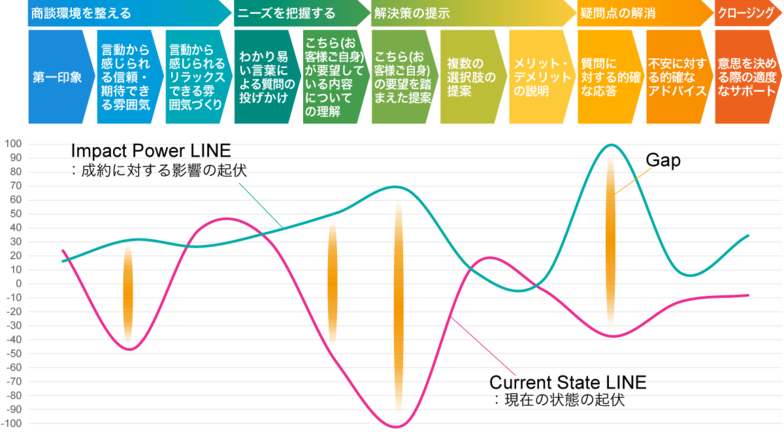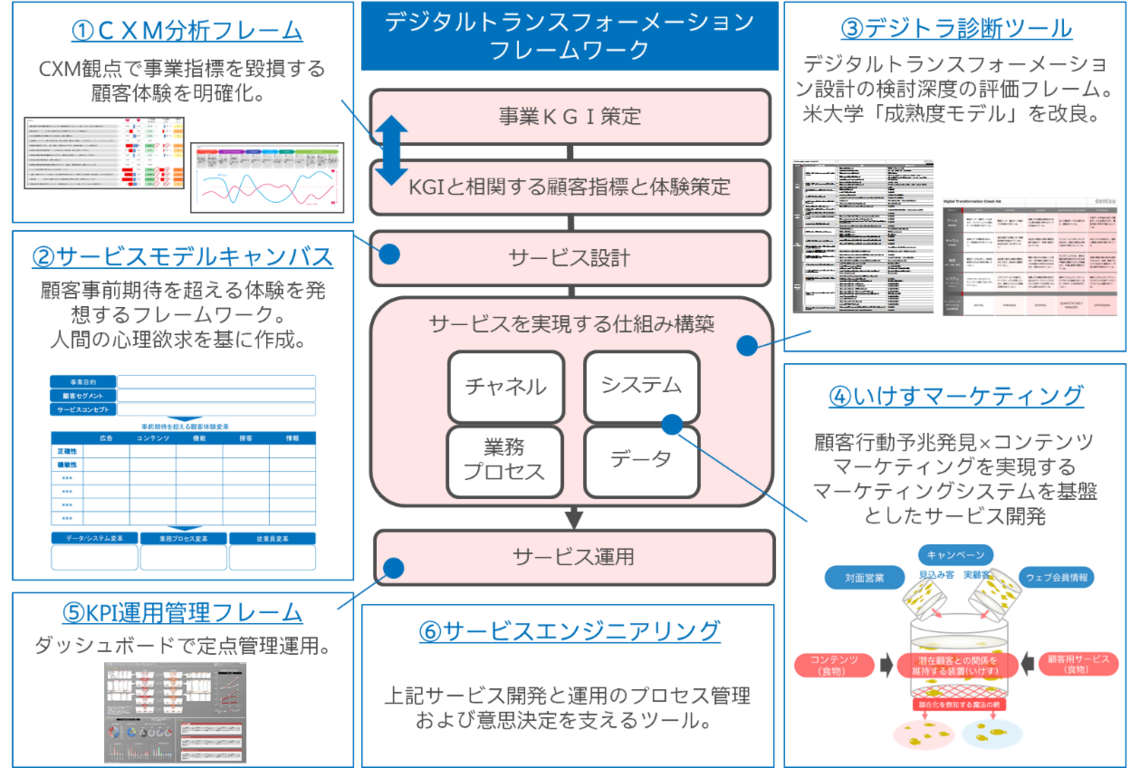In this series, we introduced initiatives beyond digital advertising within an advertising agency's digital marketing efforts, receiving numerous reactions bordering on surprise from both inside and outside the company. As this is the final installment on this theme, we would like to summarize the initiatives introduced so far.
Table of Contents
▼What Advertising Agencies Can Do in B2B Marketing
▼The "Digital Aquarium Theory" that creates new value in content provision businesses
▼Introducing an Experience Design Framework That Exceeds Customer Expectations
▼Introducing a Digital Marketing Design Diagnostic Tool
▼Customer Journey Creation Method to Visualize Customer Emotions
▼Digital Marketing Through "Face-to-Face Sales Activities"
▼Is Advertising's Role a Broad "Service" from Companies?
What Advertising Agencies Can Do for B2B Marketing
In the third article, " What Advertising Agencies Can Do for B2B Marketing," we introduced digital marketing for B2B companies. While advertising agencies are often perceived as primarily serving B2C clients, they also tend to have many B2B clients when it comes to digital marketing.
Digital marketing is "a means to achieve deep customer understanding through data utilization and appropriate approaches based on that understanding." It is a suitable method for solving business challenges required in both B2C and B2B contexts.
The "Digital Aquarium Theory" Creating New Value for Content Provision Businesses
In the sixth article, " The 'Digital Aquarium Theory' Generating New Value for Content Provision Businesses: Digital Marketing at Media Companies," we examined digital marketing for media companies, a unique B2B sector. We introduced digital marketing not merely as a method to enhance the "how to sell" aspect of B2B sales activities, but as a means to enhance the product itself – the "what to sell."
When thinking about marketing, it's easy to focus on enhancing "Promotion" (the selling method). However, digital marketing also enables the enhancement of "Product" within the classic 4Ps framework. By enhancing the "Product," a company's core value proposition is shifting from "product" to "service."
Introducing a framework for designing experiences that exceed customer expectations
In the fourth article, " Service Model Canvas: A Framework for Designing Experiences That Exceed Customer Expectations," we introduced the evolution of the 4Ps as companies shift towards service-oriented business models and explained the "Service Model Canvas" as a framework supporting corporate service design.
Within this, we highlighted customer "pre-expectations" toward the company as crucial for service design. We developed and operate a tool to support service design by organizing the types of these pre-expectations and the company's assets needed to fulfill them into a matrix. Furthermore, we identified the transformation of "business processes," "data," "systems," and "channels (including employees)" as essential for institutionalizing services.
Introducing the Digital Marketing Design Diagnostic Tool
In the fifth article, "Digital Marketing Design Diagnostic Tool," we introduced a tool that supports achieving these four transformations: "business processes," "data," "systems," and "channels (including employees)."
The Digital Marketing Design Diagnostic Tool provides a simple way to assess the current level of achievement against the desired state for these four essential categories needed to deliver services. Here, we also refer to the effort to transform these four categories as "Digital Transformation."
Customer Journey Creation Method to Visualize Customer Sentiment
In Part 2, "Creating Customer Journeys to Visualize Customer Sentiment," we introduced the "Creating Customer Journeys to Visualize Customer Sentiment" method as a technique for evaluating the service itself. This article received the most feedback among our past articles. By quantifying and visualizing customer journeys, which tend to be created somewhat qualitatively, it becomes possible to clarify pain points in the customer experience and highlight issues in the broader service delivery process.

Customer Journey Map
Digital Marketing in "Face-to-Face Sales Activities"
In this series, we defined all experiences a company provides to its customers as services. For example, we also define the "customer service" provided face-to-face by a company's sales staff as a service. Many companies cited this "customer service" as a pain point in the customer experience. Therefore, in the first article, "Digital Marketing Through 'Face-to-Face Sales Activities'," we introduced digital marketing techniques to enhance this "customer service" as a service. This approach is also achieved through transforming "data," "systems," and "business processes" within the face-to-face channel.
Is Advertising the Role of Broad "Service" from Companies?
The digital transformation that enables the delivery of desired customer experiences can be summarized as a framework as follows.

Digital Transformation Framework
These concepts continue to evolve through ongoing discussions both within and outside our company. Particularly regarding point ⑥ in the diagram above, we believe that just as manufacturing has mechanisms to visualize production processes and support management and decision-making, service design also requires mechanisms to support its processes. We are currently working on this. We would very much like to discuss this with others who share similar challenges.
Throughout this series, we have deliberately focused on digital marketing beyond advertising. However, I believe one role of advertising should also encompass the broader perspective of "service" from the company's standpoint. While organizations and operations within advertising agencies are often broadly categorized as "Advertising and Solutions" or "Media and Solutions," I would like to conclude this series by raising the question: when considering customer experience in the digital age, is this distinction necessarily correct?
Should new approaches to this issue emerge, I will share them here again.






